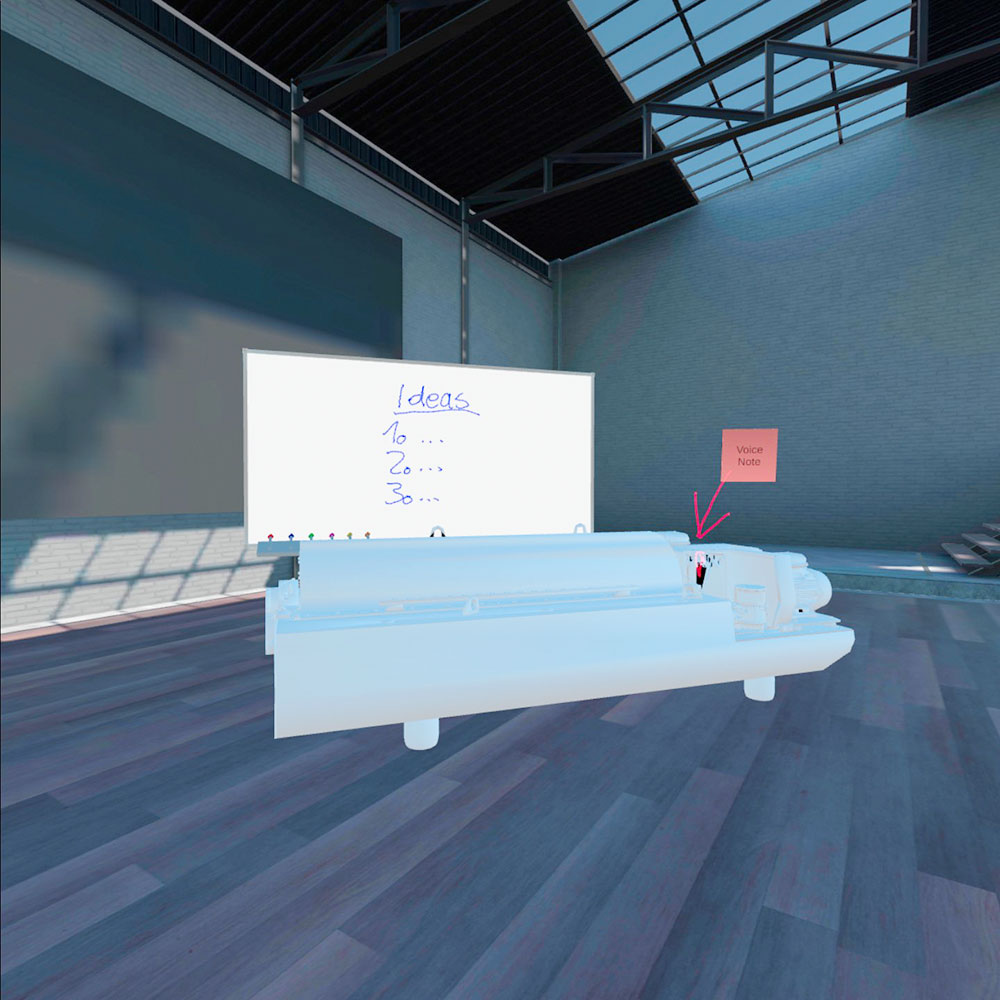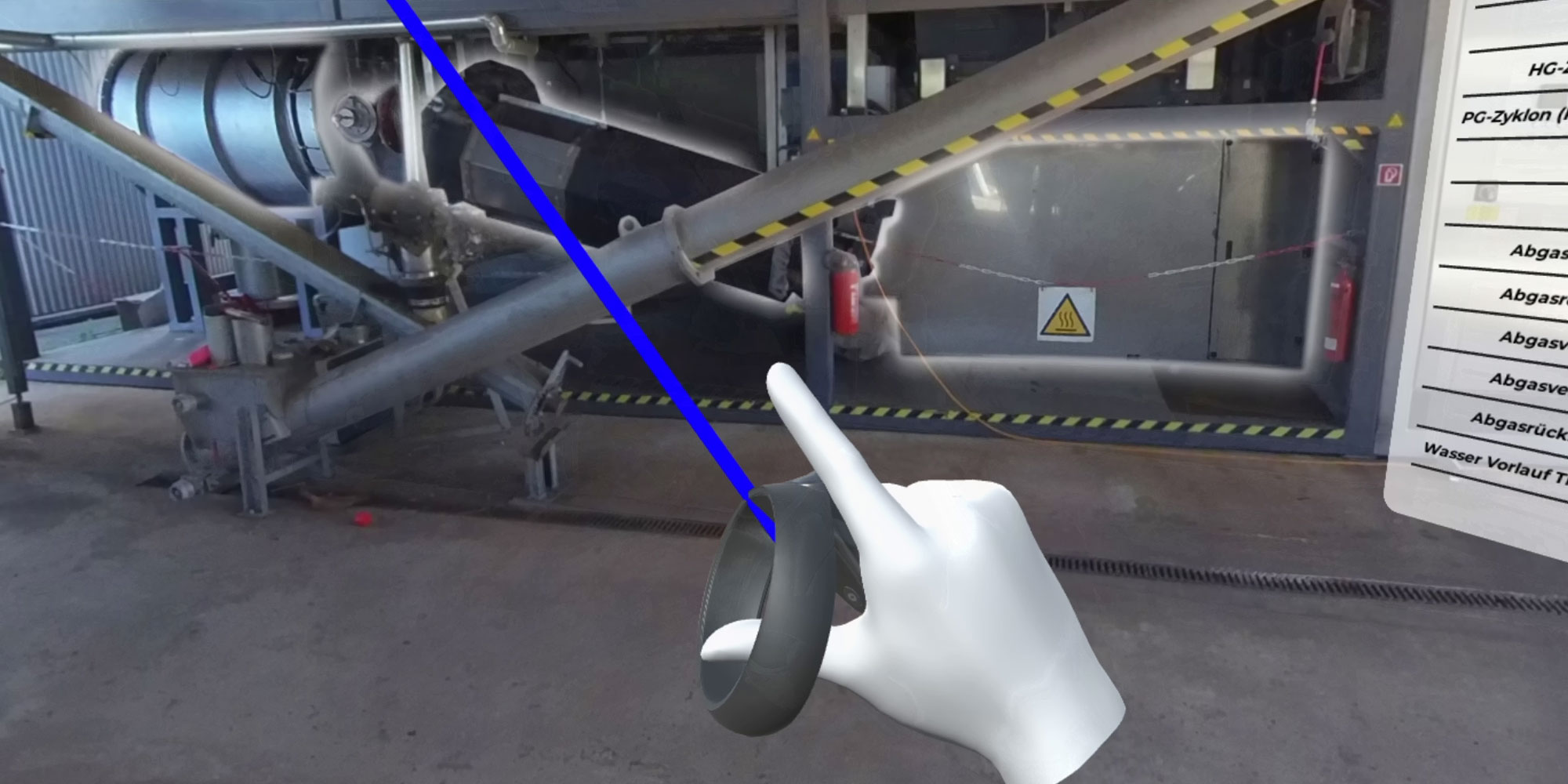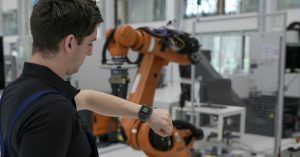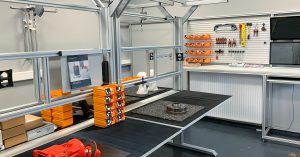As a result of the coronavirus pandemic, demand for collaboration that isn’t tied to a specific location has risen significantly.
In industry and the mechanical engineering sector – where it isn’t uncommon to work on a project in various locations simultaneously – 3D objects are quite often part of the design and development phase. However, coordinating with others involved in the project via a standard 2D screen has its limitations. A digital twin – the digital representation of an object – plays a valuable role in overcoming these challenges. Digital twins can represent actual objects or simulate a project that is still under development. Adding virtual or augmented reality gives users a perfect combination of representation and reproduction. The August-Wilhelm Scheer Institute (AWS) for digital products and processes carries out intensive research into digital twins – both for actual objects and for projects that are still under development. The non-profit institute was founded in 2014 by Professor August-Wilhelm Scheer. It is located on the campus of Saarland University and works with numerous industry partners.

Digitalisation is a must
From training, through internal processes to business models, there’s no avoiding the digital revolution in mechanical engineering. Our white paper brings you bang up to date.
GET YOUR COPY NOW
Example of a digital twin – meetings in a virtual conference room
HoloSim links the presentation of a digital twin to collaboration in a virtual conference room regardless of location.
The HoloSim research project, which is funded by the German Federal Ministry of Education and Research (BMBF), focuses on optimising virtual collaboration. One organisation taking part, the M.TEC engineering company, is faced with a two-fold challenge when it comes to flow simulation (= CFD simulation; CFD = Computational Fluid Dynamics). It needs to depict the simulated flow behaviour of components under development. However, conventional reproduction in 2D format is not suitable for three-dimensional simulation. The fact that the development team is spread across multiple sites is a further obstacle. This is where the AWS Institute comes in, linking a digital twin in the form of a 3D hologram to a virtual office to serve as an example: “We make meetings in three-dimensional spaces possible and combine everything with a digital twin. During the planning, drafting and design phase for new products, a planned object can be brought into the three-dimensional space to enable teams that are not based at a single location to analyse and work on it,” explains Simon Bender, Head of Digital Realities Innovation Lab at the AWS Institute.
The increased efficiency of collaboration is significantly boosting the speed of prototype development. Simulation data is not affected by this process, but it is simultaneously converted and optimised accordingly for representation in a virtual environment. Representation can also be customised by the user, with the option of adding items such as whiteboards, slides or video files. In this way, HoloSim links the presentation of a digital twin to collaboration in a virtual conference room, regardless of location. Once everything is set up, it only remains to invite the other participants. “The individuals involved then put on glasses for virtual or augmented reality. They can now move around freely in this space and interact with the objects in it,” Bender says.

Exemplary efficiency for analysing condition data thanks to digital twin
Another project from the AWS Institute provides a perfect example of the digital twin principle. Here, the user touches a system’s sensors to create a virtual representation. The visualised condition data of individual components can thus be experienced first-hand through natural interaction via VR glasses, as Bender points out: “I simply approach the digital twin, i.e. the virtual representation of the component. The object’s performance data is then displayed for me on a clearly arranged dashboard.” As a result, maintenance procedures and troubleshooting can be carried out directly in the virtual space.
Remote maintenance using a digital twin is not just a promising option in the coronavirus pandemic, but also in view of the travel costs eliminated and the protection of the environment.
The physical presence factor is thus removed in this example, too. This is not just a promising option in the coronavirus pandemic, but also in view of the travel costs eliminated and the protection of the environment. Indeed, digital twins also offer huge potential in predictive maintenance of plants through KI. The technology is one of the prime examples of using artificial intelligence in mechanical engineering, which we’ve already reported on.
Are you interested in digitalisation and what the future of mechanical engineering holds? Then we have something that’s right up your street! Simply subscribe to the item blog by completing the box at the top right.





